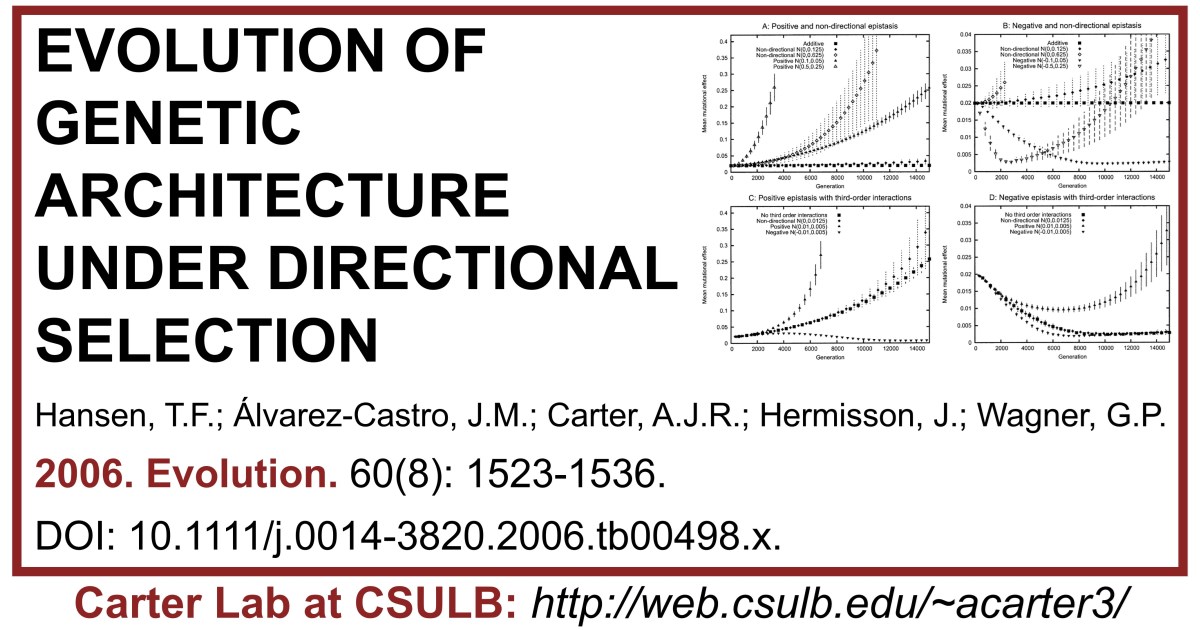ABSTRACT:
We investigate the multilinear epistatic model under mutation-limited directional selection. We confirm previous results that only directional epistasis, in which genes on average reinforce or diminish each other’s effects, contribute to the initial evolution of mutational effects. Thus, either canalization or decanalization can occur under directional selection, depending on whether positive or negative epistasis is prevalent. We then focus on the evolution of the epistatic coefficients themselves. In the absence of higher-order epistasis, positive pairwise epistasis will tend to weaken relative to additive effects, while negative pairwise epistasis will tend to become strengthened. Positive third-order epistasis will counteract these effects, while negative third-order epistasis will reinforce them. More generally, gene interactions of all orders have an inherent tendency for negative changes under directional selection, which can only be modified by higher-order directional epistasis. We identify three types of nonadditive quasiequilibrium architectures that, although not strictly stable, can be maintained for an extended time: (1) nondirectional epistatic architectures; (2) canalized architectures with strong epistasis; and (3) near-additive architectures in which additive effects keep increasing relative to epistasis.
